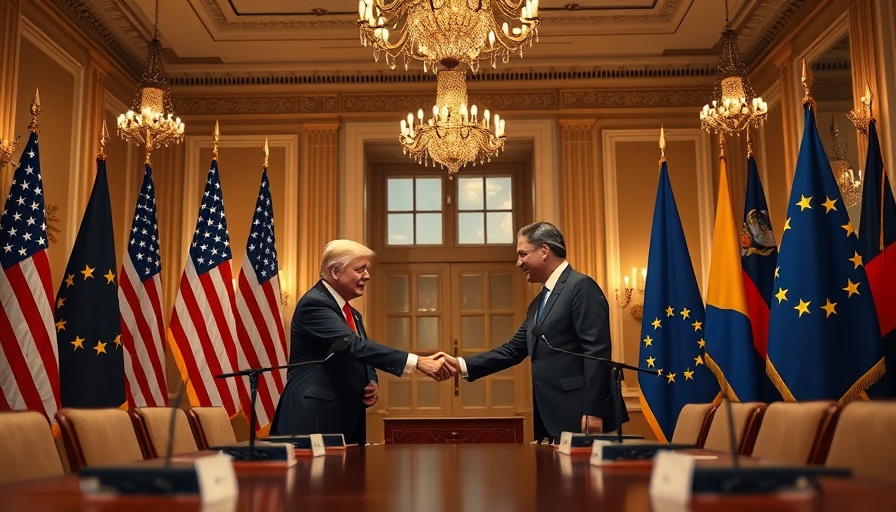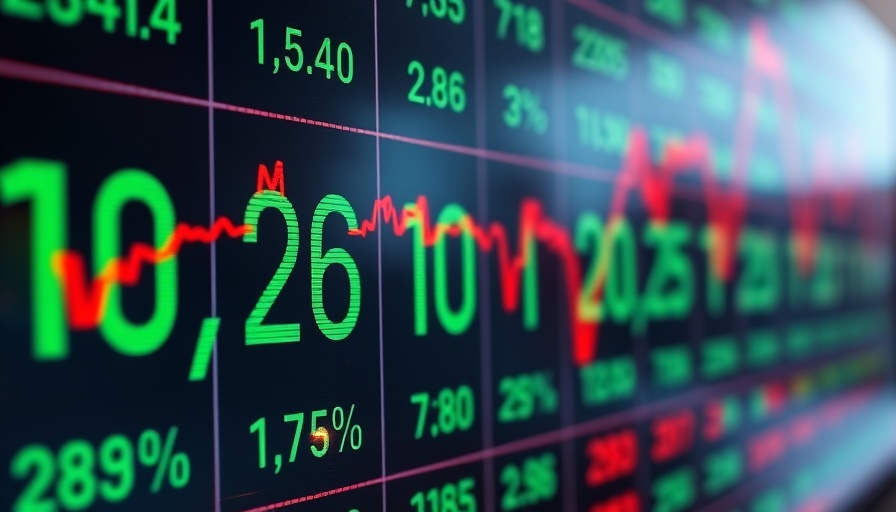
US and EU Reach a Pivotal Trade Agreement
In a significant move that has implications for global trade, the United States and the European Union have forged a new trade agreement underlining their economic relationship. Announced by U.S. President Donald Trump, this framework aims to avert a looming crisis over tariffs that were set to escalate tensions between these two major economies. The deal comes at a time when both parties were at the brink of a trade dispute that could have impacted countless industries.
Key Terms of the Agreement: What You Need to Know
The newly established deal includes a 15% tariff on EU goods entering the U.S., alongside commitments from the EU to purchase significant amounts of U.S. energy and military hardware. This arrangement is seen as a mixed bag; while it avoids the previously threatened 30% tariff, many European leaders view the 15% as a setback from their goal of achieving free trade through zero tariffs.
Implications and Reactions from Stakeholders
Reactions have been mixed across the Atlantic. European businesses express a sense of relief as clarity returns amidst uncertainty, but frustrations linger about the less-than-ambitious outcomes compared to earlier hopes. U.S. President Trump's administration, meanwhile, seems keen on framing this as a victory in his broader push to reshape global trade dynamics. His previous tough stance on international trade has left many wondering about the sustainability of this agreement in the long run.
Historical Context of US-EU Trade Relations
The U.S. and EU have a long-standing relationship that constitutes nearly a third of the world's trade. Throughout recent history, trade relations have been marked by ups and downs, often swayed by political climates and economic policies. In recent years, trade tariffs and barriers have become a focal point of contention, especially as the U.S. seeks to address trade imbalances that it feels disadvantage the domestic economy.
Future Predictions: Where Will This Lead?
Looking ahead, industry analysts speculate on the potential trends that may emerge from this deal. Will the U.S. and EU find common ground for further cooperation, or will this agreement be the first step in a longer negotiation process for more comprehensive trade reforms? The evolving global landscape, with rising economies in Asia and Africa, adds another layer of complexity to these relations.
Understanding the Economic Stakes
The stakes of this trade deal extend far beyond tariffs; it influences investment strategies and market conditions. Investors looking to optimize their portfolios must contemplate the ramifications of U.S.-EU relations on sectors like agriculture, energy, and technology. As the U.S. emphasizes energy sales, particularly natural gas and oil, businesses in those sectors could see newfound opportunities as European businesses pivot based on tariff rates.
Investor Insights: Navigating Market Adjustments
For investors, understanding market reactions to such trade developments is crucial. Analysts recommend keeping a close eye on how stocks in tech, health care, and commodity sectors respond in the wake of this trade agreement. Additionally, it’s advisable for investors to consider the implications of risk management and portfolio diversification strategies amidst this volatile trading climate.
Conclusion: A Call for Strategic Awareness
Trade agreements like the one recently reached between the U.S. and the EU serve as reminders of the interconnected nature of global markets. Investors, policymakers, and consumers alike should remain attuned to these developments as they evoke changes that may ripple through various economic sectors. Optimizing investment approaches will be crucial as the implications of this deal unfold. Stay informed, analyze market reactions, and adjust your strategies accordingly to navigate the evolving landscape effectively.
 Add Row
Add Row  Add
Add 



Write A Comment